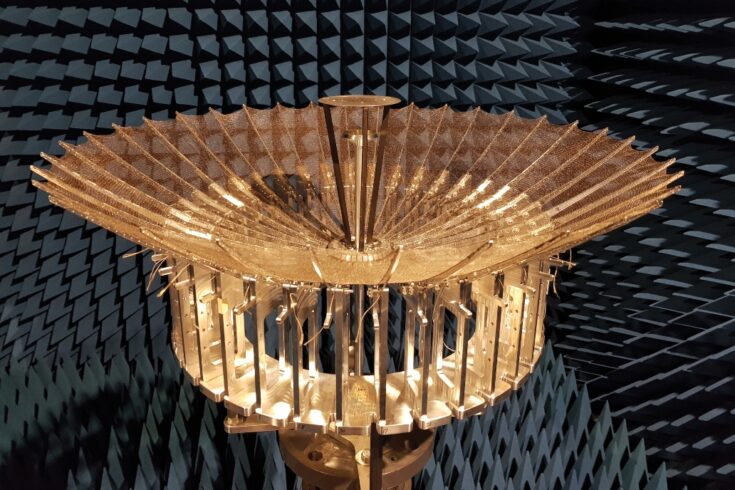Antennas are critical in satellite communication. They both transmit and receive data, and without them a satellite unit cannot function properly.
But antennas in a space environment come with engineering challenges. Lowering the cost of space technology means reducing material weight and increasing safety, reliability and functionality. Antennas must be robust enough to survive the demands of outer space because satellite parts cannot be repaired or replaced once they are in orbit.
Oxford Space Systems, based at the UK’s Harwell Space Cluster, has worked on deployable antennas with the Space Research and Innovation Network for Technology (SPRINT) programme and the University of Surrey.
About the project
The new, £5 million SPRINT programme is supported by Research England’s Connecting Capability Fund. It is dedicated to supporting the growth of small to medium enterprises in the UK through the commercial exploitation of space data and technologies.
For the UK to be a space leader, collaborative investment is needed to improve how exceptional and lower cost technologies are designed, manufactured and deployed.
Oxford Space Systems has overcome antenna challenges by putting its new designs through mechanical and thermal tests that simulate the space environment, and by measuring how new antenna materials perform.
Deployable antennas can be folded before launch and expanded once in orbit, reducing the cost of putting satellites in space. A foldable antenna takes up less room so that a satellite’s overall mass is reduced. This results in a smaller payload, which requires less energy to send into orbit.
Dr Ross Burgon, Head of the national SPRINT programme, based at the University of Leicester, said:
As commercial product development for the space sector gets increasingly competitive, reducing development times and costs can be a real game-changer for suppliers. The support of experts and funding from the SPRINT programme can help businesses like Oxford Space Systems to become pioneers.
The programme is delivered by five of the UK’s leading space universities:
- University of Leicester (lead institution)
- The University of Edinburgh
- Open University
- University of Southampton
- University of Surrey.
Impacts of the project
Less risk, faster development
The SPRINT collaboration has helped lower potential project risks for Oxford Space Systems, and the development of future products is expected to be faster.
The company’s antenna membrane performed better than expected at a QV band frequency, making it more cost-effective. QV band frequency is an extremely high frequency (EHF) used for satellite communication.
Access to expertise
Michael Lawton, founder of Oxford Space System, said:
The SPRINT programme provides essential support. Working with the University of Surrey allowed us to employ expertise in a niche technical area to analyse the effects of a space environment on composite materials.
Through SPRINT, we’ve been able to access key University of Surrey facilities and areas of expertise across multiple departments. This includes labs in the physics department to determine the thermomechanical properties of the resins, the Surrey Space Centre to do the thermal cycling tests, and the Centre for Engineering Materials and Structures for the material characterisation.
Proof of concept
Oxford Space Systems will use the results gained from collaborating with the University of Surrey and apply them to the manufacturing of an engineering qualification model. This qualified space antenna will then form the basis of a flight unit, which will be placed into orbit.
Michael added:
Our new generation of deployable antennas and structures are lighter, less complex and lower cost than those in current commercial demand. The manufacturing strategy and foldability was successfully demonstrated.
Top image: An Oxford Space Systems rib-wrapped antenna. Credit: University of Surrey.

